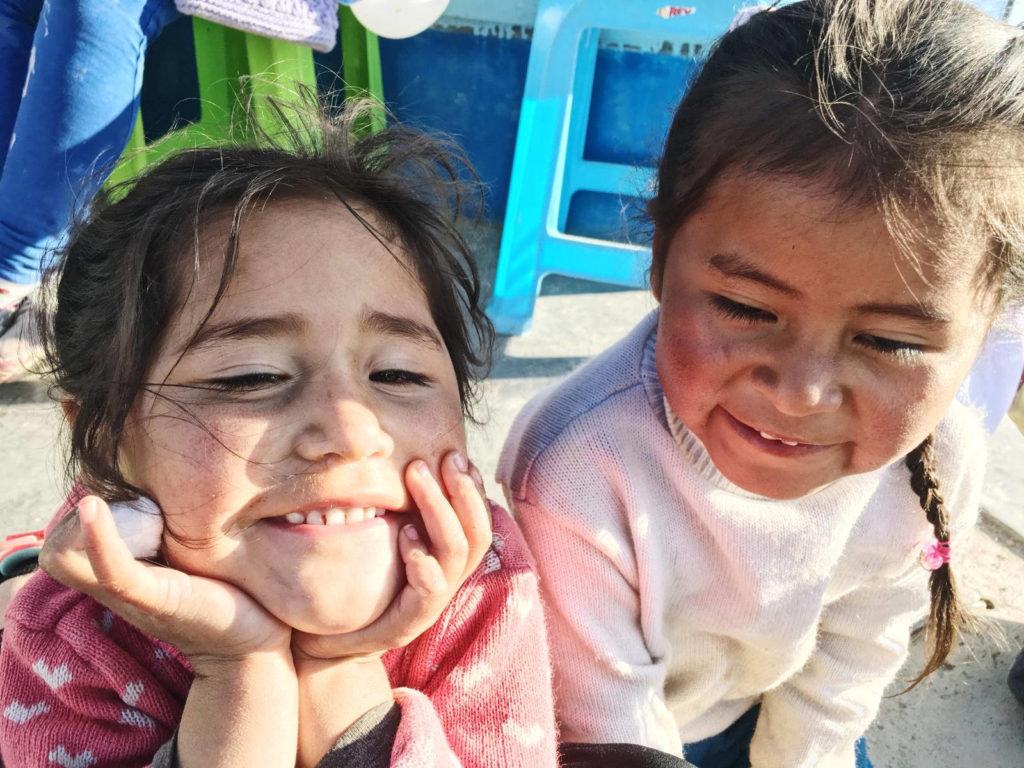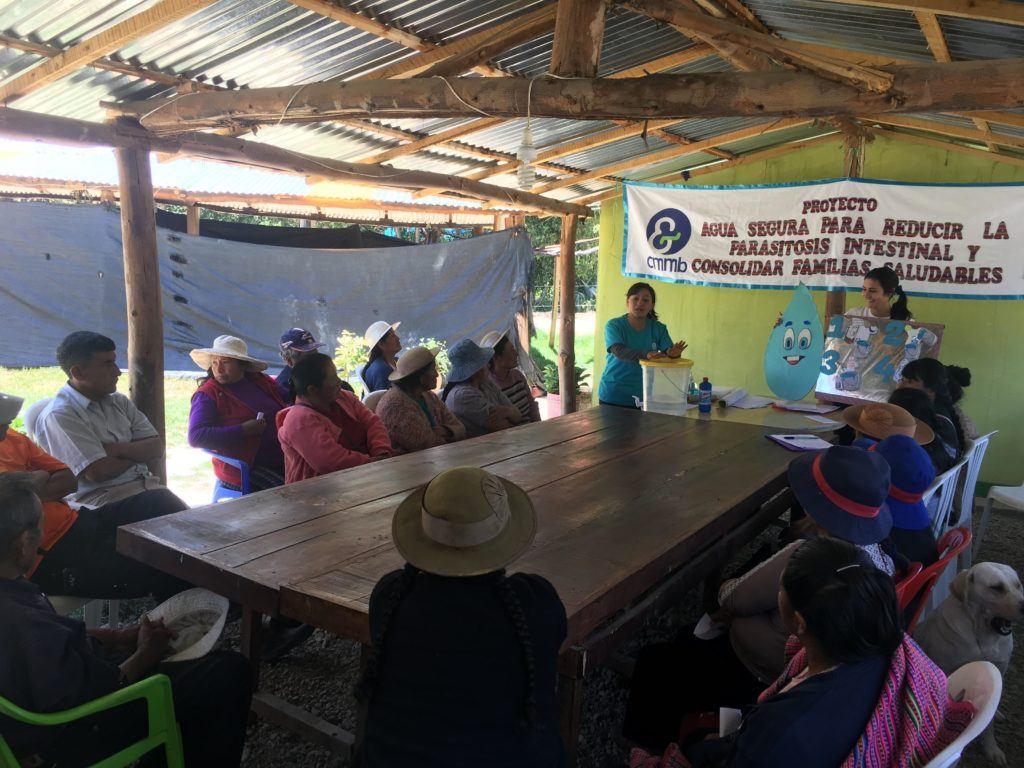World Water Day 2019: Leave No One Behind
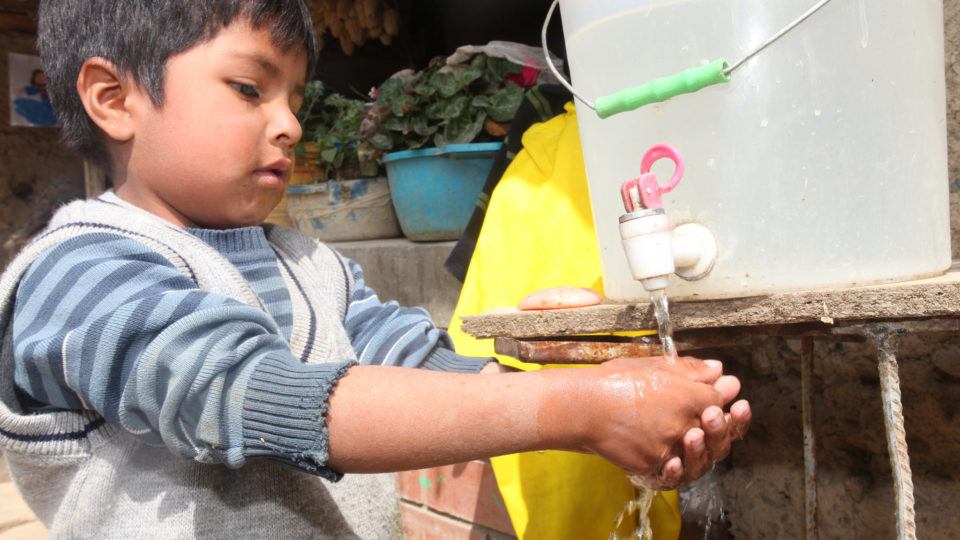
In 2010, the United Nations declared access to safe water a basic human right, and yet 3 in 10 people – 2.1 billion people – around the world do not have access to safe water in their homes. Every year on March 22nd, we celebrate World Water Day – a day dedicated to spreading awareness and advocating for the sustainable and fair access to safe water. This is more than quenching thirst, access to safe water means healthier lives.
This year’s theme is: Leaving no one behind; a commitment to ensuring access to safe water regardless of geography, race, or gender. Today, we travel to a community in the Huancayo District of Peru, where residents struggle daily with the health and economic implications of a lack of access to safe water and sanitation. Here, we spoke with Jolynn Meza Wynkoop is a WASH specialist and CMMB volunteer and Gina Amaro Marcelo, a CMMB Peru colleague, to better understand why improving access to improved water, sanitation, and hygiene (WASH) is so critical for people living here.
Time to WASH Up
WASH stands for water, sanitation, and hygiene. What do you believe are the largest problems in this community surrounding health issues related to WASH?
The largest health problem linked to poor WASH is diarrheal disease often contracted from drinking contaminated water. Other health problems that are specifically related to WASH include malnutrition – a common result of diarrhea and parasitic infections. Like diarrhea, parasitic infections are contracted from drinking contaminated water.
Anemia is also a major health condition linked to a lack of access to improved WASH. According to the WHO, anemia in Peru is a severe problem affecting more than 50% of preschool children, 42% of pregnant women, and 40% of non-pregnant women of the reproductive age (WHO).
Anemia, though related to poverty, can develop from drinking water with hidden parasites. For instance, hookworms are commonly found in contaminated drinking water and if consumed, can cause severe sickness. The illness, in turn, means that the infected individual is unable to absorb key nutrients, including iron, which leads to anemia.
What are some of the issues surrounding water access in the communities?
One of the largest problems is the lack of infrastructure. Most of the families we serve live out in the rural area, where there is little to no access to safe, clean drinking water. Those living in rural locations rely on one of the following as their water source: river, or stream, a well, or a water tank.
As you can imagine, the water collected from streams or rivers are contaminated with animal and human fecal matter, chemicals from detergents used by people who use the river for washing clothing, and by rubbish – discarded items that are either intentionally thrown into the river or stream or that find their way into this water source.
No matter the water source – river, stream, well, or tank, here it is recommended that ALL water that is collected should be boiled as a precaution before drinking.
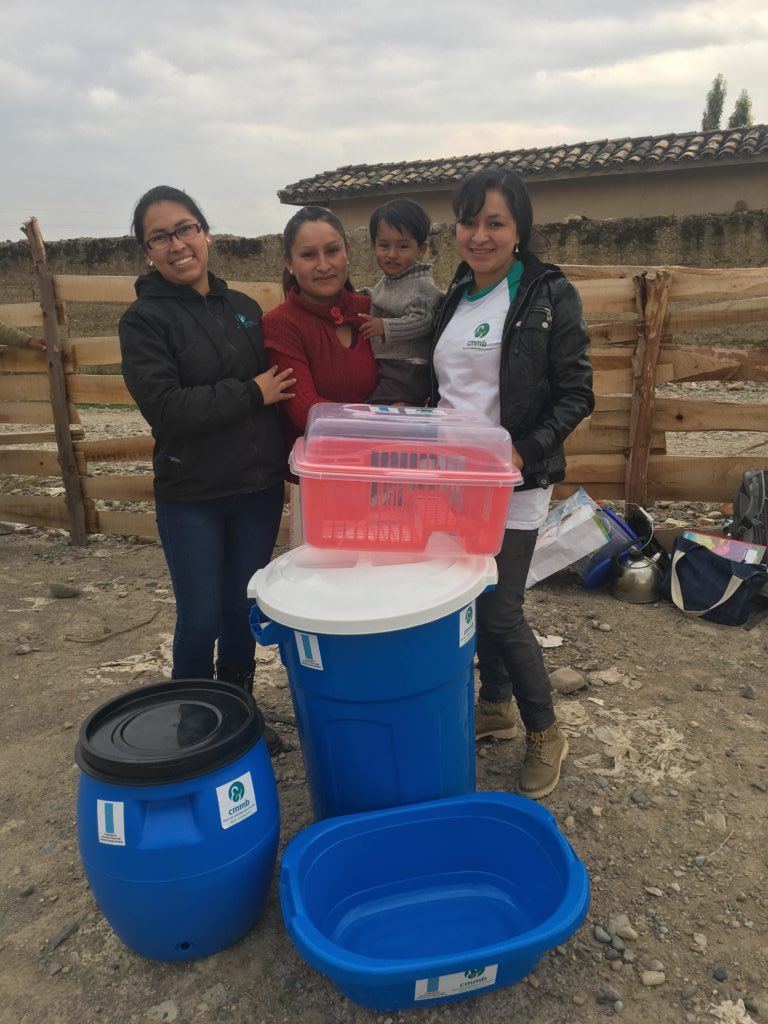
CMMB provides kitchen kits to try and alleviate these challenges. Kitchen kits include various containers and lids for water storage, a water pitcher and water tap, a container for dish washing, a drying rack for dishes, and storage container for silver. Each of these provision is used for safer water consumption, sanitation, and storage procedures.
Many of the people in this community do not have access to a toilet at home. Why is this and why does it matter?
The three largest contributing factors to the lack of sanitary practices are:
- Poverty: In Peru, 6.6 million people (20.7 percent) live below the national poverty line (Worldbank).
- Lack of infrastructure: In 2015, 66.8 percent of the population in Peru had access to the public sewerage system. For families in rural communities, only 15.6 percent had access (WHO). The remaining population relies on either man-made latrines consisting of a hole in the ground and a tarp for privacy.
- Cultural norms and practices: Open defecation is common here. This practice in rural settings results in high levels of water-borne illnesses and diarrhoeal disease. But people do not make the connection between long standing practices and the illnesses they cause.
The majority of people we serve here earn less than $5 US per day. As a result, they have to be very deliberate in the way they use their resources. If a family has to choose between putting food on their table or connecting their home to the sewage system, feeding their family will always take priority.
Tell us about issues around hygiene in the communities?
Once again infrastructure and long standing practices play a huge role here. For instance, people here don’t have access to hand washing facilities – sink, running water, soap. Additionally, they don’t connect unclean hands with diarrhea or other illnesses. Without this knowledge, people don’t understand how eating with dirty hands will lead to illness.
“Even today, convincing health care providers to take hand-washing seriously is a challenge. Hundreds of thousands of hospital patients get infections each year, infections that can be deadly and hard to treat.” (NPR)
But there are many other factors that contribute to poor hygiene and therefore poor health. For example, many houses are inadequately built allowing for bugs, flies, and all sorts of creatures to get in. These unwanted guests also bring along unwanted germs. It is also very common for you to see people living in very close proximity to their livestock. This allows for increased transmission of Zoonosis – individuals who spend a lot of time with animals are at risk of infections transmitted from animal to humans (e.g. Rabies and Ebola). In Peru, a common source of Zoonosis comes from drinking water that has been contaminated by animal feces, but diseases can also be contracted from direct contact with animals.

Little Mia is almost two years old and is pictured here with her dog. Children are often in close contact with pets and livestock, increasing their risk for parasitic infection.
What are some ways CMMB is working to help combat some of these challenges?
One simple but essential method of improving hygiene and therefore health is teaching appropriate hand washing techniques to families. This isn’t always easy, and many families don’t have soap or water at their homes, meaning practicing good hand washing is not always even an option. We work hard to supply hand washing stations to families (e.g. a bucket, soap).
Once they have the supplies, then they need to be taught when and how to wash their hands. We teach five moments that hand washing is crucial for any person. Two “Afters” and three “Befores”:
- After going to the bathroom
- After changing a baby’s diaper
- Before cooking
- Before eating
- Before breastfeeding
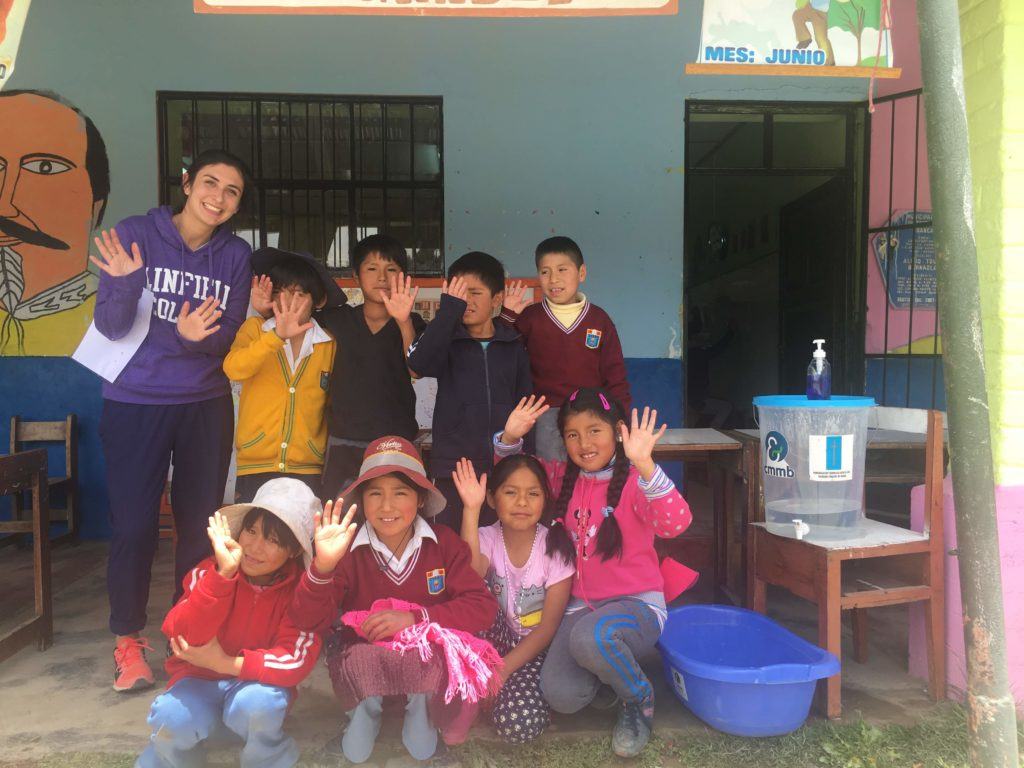
Jolynn (purple) and some young community members showing off their clean hands. Jolynn was leading a hand washing clinic with these little ones where they learned the importance of keeping their hands clean and the best practices for doing so!
Tell us about the community health workers and their role in all of this?
One way we combat WASH related health issues is through the training of community health workers. We train these volunteers so that they change their own behaviors at home, and empower them to teach others in their communities.
Our training programs stress the importance of:
- Keeping clean and safe living spaces
- Providing appropriate nutrition (and ways they can do that with local, accessible foods)
- Boiling water and using other safe water practices
- Preventing parasitism in children
- Hand washing
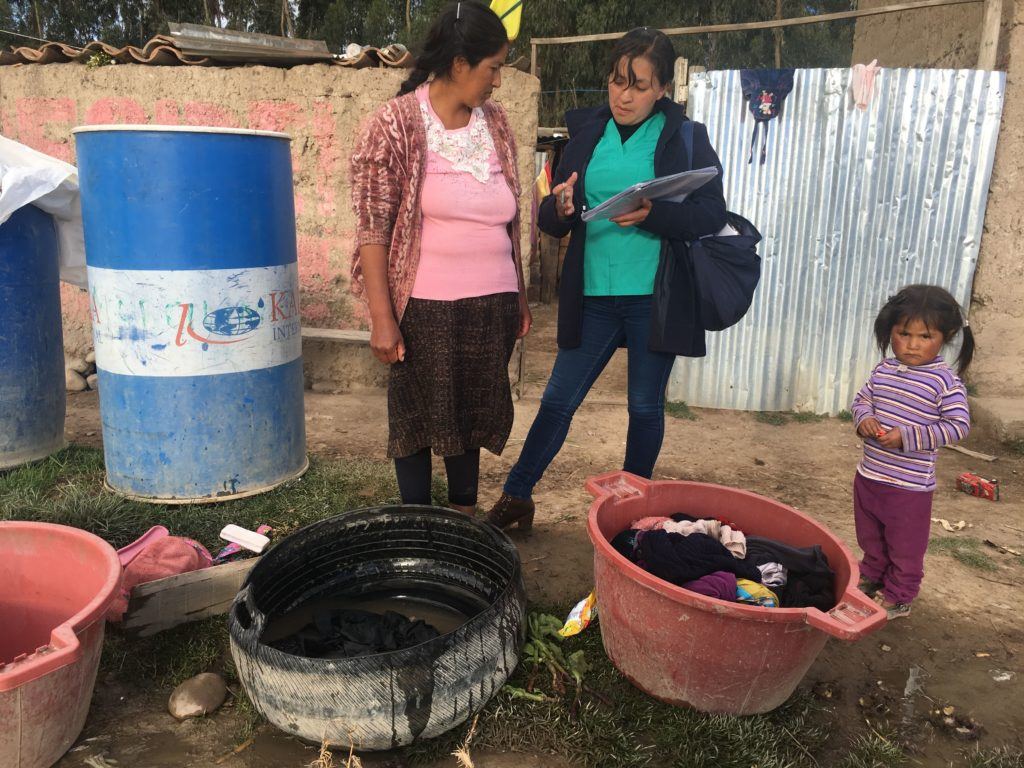
Gina visiting one-on-one with a community mother. She educates her on key WASH interventions that keep this mother’s family healthy.
We also provide exams to collect children’s height, weight, and hemoglobin levels to check for anemia and to make sure that they are on track.

Former volunteer Brynn joins one of the sisters in assessing the growth of a child under 5. These growth monitoring sessions aim to improve nutrition, reduce the risk of death or inadequate nutrition, help educate carers, and lead to early referral for conditions manifest by growth disorders.
What are some of the challenges that you have experienced while trying to implement change?
The main challenge is people’s resistance to change. The people we serve want to have improved health, but cultural practices and habits sometimes stand in the way. For example, hand washing is a simple task if you have a hand washing station set up in your home. But, when you are used to simply dipping your hands into a bucket of water, shaking off the excess water, and drying them on your pants or skirt, it is a difficult habit to break.
Despite these challenges, I am inspired every day by the progress and the impact WASH intervention is having on our community. I see this in the community efforts to maintain newly installed wells and in the excitement children take to working with our volunteers when learning the proper hand washing techniques.
WASH is improving the health of our community here in Huancayo. What I am most proud of is the fact that really, the success of WASH interventions, rely on the willingness of community members to listen, learn, and implement.
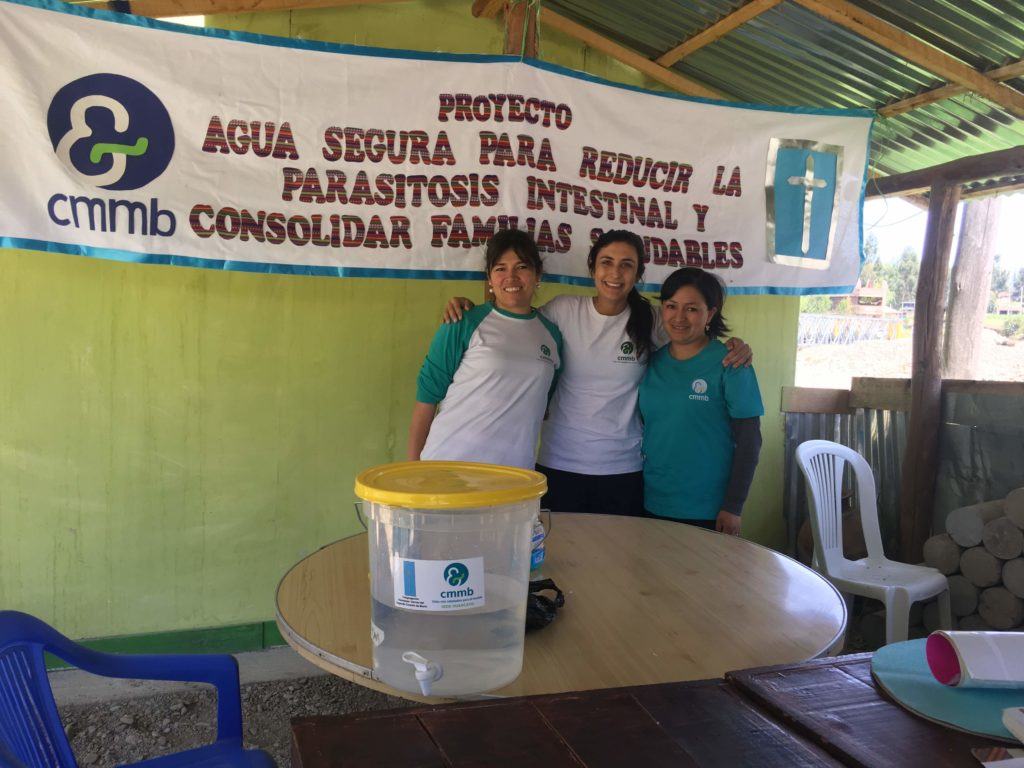
Gina (right) and Jolynn (middle) with fellow CMMB Staff member, Maria Isabel Palomino Yupanqui (left), posing for a photo after a safe water workshop in Tambo Huari.
Why is WASH important to you and to the communities you serve?
Safe WASH practices help improve the health of those that I serve. Through the information and training that I am able to provide, mothers and children can have an improved quality of life while learning about appropriate hand washing techniques, safe water consumption, and the importance of antiparasitics.
In the fight for universal access to safe water, no one gets left behind.
About the interviewees
 Jolynnis a CMMB volunteer serving as a water, sanitation, and hygiene (WASH) specialist in Huancayo Peru. She recently sat down with volunteer turned CMMB staff member, Gina Amaro Marcelo to complete this interview.
Jolynnis a CMMB volunteer serving as a water, sanitation, and hygiene (WASH) specialist in Huancayo Peru. She recently sat down with volunteer turned CMMB staff member, Gina Amaro Marcelo to complete this interview.
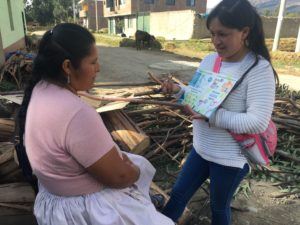 Gina Amaro Marcelo (right) is a nurse who volunteered with CMMB for six months before she joined the team as a full time employee in June of 2018. She lead projects that brings clean water to communities in the Huancan/Huari region of Huancayo. As a nurse, she brings a great deal of knowledge and skills to her work, benefiting the entire community. Being a local Peruvian, she knows both the culture and the people and has committed herself to serving the poor and underprivileged through public health practices.
Gina Amaro Marcelo (right) is a nurse who volunteered with CMMB for six months before she joined the team as a full time employee in June of 2018. She lead projects that brings clean water to communities in the Huancan/Huari region of Huancayo. As a nurse, she brings a great deal of knowledge and skills to her work, benefiting the entire community. Being a local Peruvian, she knows both the culture and the people and has committed herself to serving the poor and underprivileged through public health practices.

